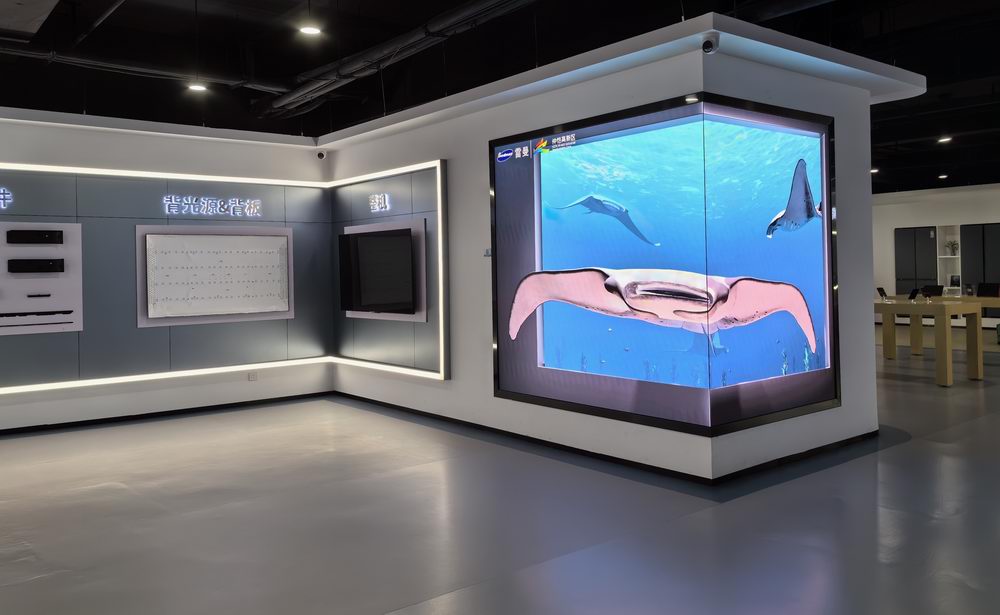How Can Industry-Academia Platforms Boost Innovation?

Industry-academia platforms connect universities with businesses to spark innovation. These collaborations create a dynamic environment where ideas flow freely. The Zhongkai High-tech Zone exemplifies this synergy. The National Foreign Trade Transformation and Upgrading Base, with its electronic information cloud platform, supports local enterprises. This platform helps businesses grow by providing resources and expertise. In today's fast-paced economy, such partnerships are essential. They drive progress and keep industries competitive. The Industry-Academia-Research Collaborative Platform plays a crucial role in fostering these connections.
Understanding Industry-Academia Platforms
Definition and Purpose
What are industry-academia platforms?
Industry-Academia-Research Collaborative Platforms serve as bridges between universities and businesses. These platforms create spaces where ideas from academic research meet practical industry needs. Universities bring fresh perspectives and cutting-edge research. Businesses contribute real-world challenges and resources. This combination sparks innovation and growth.
Why are they important for innovation?
Innovation thrives when diverse minds collaborate. Industry-Academia-Research Collaborative Platforms encourage this by bringing together different sectors. The platforms help translate academic theories into practical solutions. Businesses can leverage academic insights to improve products and services. This collaboration leads to breakthroughs that might not happen in isolation.
Current Landscape
Overview of existing platforms
Many Industry-Academia-Research Collaborative Platforms exist worldwide. These platforms vary in focus and structure. Some target specific industries like technology or healthcare. Others aim to foster general innovation across multiple fields. Each platform plays a role in connecting academia with industry.
The Huizhou Zhongkai High-tech Zone stands out as a prime example. This zone supports local enterprises through its National Foreign Trade Transformation and Upgrading Base. The electronic information cloud platform within the zone provides essential resources. Companies benefit from access to advanced technology and expert guidance. This support helps businesses innovate and stay competitive.
The Huizhou Zhongkai High-tech Zone stands out as a prime example. This zone supports local enterprises through its National Foreign Trade Transformation and Upgrading Base. The electronic information cloud platform within the zone provides essential resources. Companies benefit from access to advanced technology and expert guidance. This support helps businesses innovate and stay competitive.
National foreign trade transformation and upgrading base
The National Foreign Trade Transformation and Upgrading Base offers significant advantages. Enterprises in the Zhongkai High-tech Zone gain access to valuable tools and knowledge. The electronic information cloud platform assists in streamlining operations. Companies can enhance their capabilities and reach new markets. This platform acts as a catalyst for growth and development.
Case Studies:
Duolingo Language Learning System: Carnegie Mellon academics built this system. Duolingo went public in 2021 with a $5 billion valuation. This success showcases the power of Industry-Academia-Research Collaborative Platforms in deploying AI technology.
Stanford University Spin-Off Companies: Stanford created 25 new companies based on university technology. Liquidation of equity in 22 companies brought in $51.9 million. This highlights the potential of academia-industry partnerships in creating new ventures.
Industry Dominance in AI Research: Industry now leads basic AI research, traditionally done by academia. This shift raises concerns about the future of AI research in the public interest. Industry-Academia-Research Collaborative Platforms can balance this trend by fostering joint research efforts.
Barriers and Facilitators of Collaboration
Common Barriers
Cultural differences between industry and academia
Cultural differences often create hurdles in collaboration between industry and academia. Academia focuses on deep research and theoretical exploration. Industry prioritizes practical solutions and quick results. This difference can lead to misunderstandings and misaligned expectations. A study from The Living Core highlights these structural and cultural barriers. These barriers prevent the full potential of synergy between academia and industry. Bridging this gap requires mutual understanding and respect for each other's strengths.
Funding and resource allocation issues
Funding and resource allocation pose significant challenges. Academia often struggles with limited funding for research projects. Industry may hesitate to invest without clear immediate benefits. The AI100 study from Stanford University notes that tighter coupling of academic and industrial research may affect long-term problem-solving. This situation can hinder innovation. Effective collaboration needs a balanced approach to funding and resources. Both parties should see value in their contributions.
Facilitators of Successful Collaboration
Shared goals and objectives
Shared goals and objectives play a crucial role in successful collaborations. When academia and industry align their visions, they create a powerful partnership. Both parties benefit from shared knowledge and resources. The MIT Sloan study emphasizes the importance of focusing on common interests. This approach helps bridge the growing divide between academia and industry. Clear goals ensure that both sides work towards a common purpose.
Effective communication channels
Effective communication channels foster collaboration. Open and transparent communication builds trust and understanding. Regular meetings and updates keep all stakeholders informed. The Zhongkai High-tech Zone exemplifies this with its electronic information cloud platform. This platform supports enterprises by providing essential resources and expert guidance. Companies in the zone benefit from streamlined operations and enhanced capabilities. Communication ensures that everyone stays on the same page, leading to successful outcomes.
Best Practices and Successful Case Studies

Best Practices for Collaboration
Establishing clear roles and responsibilities
Every successful collaboration begins with clarity. Industry-Academia-Research Collaborative Platforms thrive when everyone knows their role. Universities focus on research and innovation. Businesses bring practical challenges and resources. This clarity helps avoid confusion and keeps projects on track. The Medical University of Graz project shows how defining roles can drive medical innovation. Clear roles create a culture of collaboration. Everyone contributes effectively to the shared goals.
Regular evaluation and feedback mechanisms
Regular check-ins keep collaborations healthy. Industry-Academia-Research Collaborative Platforms benefit from continuous feedback. Evaluations help identify what's working and what needs improvement. Feedback ensures that all parties stay aligned with their objectives. The process encourages open communication. It fosters a sense of partnership and trust. Regular evaluations lead to better outcomes and sustained innovation.
Successful Case Studies
Case study 1: Huizhou Zhongkai High-tech Zone's collaboration with local universities
The Huizhou Zhongkai High-tech Zone stands as a beacon of successful collaboration. Local universities partner with the zone to support businesses. The National Foreign Trade Transformation and Upgrading Base plays a crucial role. The electronic information cloud platform offers resources and expertise. Companies gain access to advanced technology and guidance. This support helps businesses innovate and grow. The collaboration showcases the power of Industry-Academia-Research Collaborative Platforms.
Case study 2: National foreign trade transformation and upgrading base's partnership with research institutions
Another shining example is the National Foreign Trade Transformation and Upgrading Base. Partnerships with research institutions drive innovation. The electronic information cloud platform supports enterprises in the zone. Companies benefit from streamlined operations and enhanced capabilities. The collaboration fosters growth and development. Non-commercial collaborations, like those promoting AI for future pandemics, highlight societal impacts. These partnerships demonstrate the potential of Industry-Academia-Research Collaborative Platforms.
Recommendations for Future Collaborations
Strategies for Enhancing Collaboration
Encouraging interdisciplinary research
Interdisciplinary research can open new doors for innovation. The Industry-Academia-Research Collaborative Platform thrives when experts from different fields come together. Imagine a chemist working with a computer scientist. They could create something groundbreaking. This kind of collaboration breaks down silos. It encourages fresh ideas and solutions. The MIT Sloan Ideas Made to Matter report highlights the importance of unlocking talent globally. People from diverse backgrounds bring unique perspectives. These perspectives can lead to breakthroughs in research and development.
Leveraging technology for better communication
Technology can make communication a breeze. The Industry-Academia-Research Collaborative Platform benefits from tools like electronic information cloud platforms. These platforms streamline operations and keep everyone connected. Companies in the Zhongkai High-tech Zone use these tools to stay ahead. Regular updates and shared resources keep projects on track. Communication becomes seamless, allowing for quick decision-making. The Stanford University AI100 Report suggests that AI can shape social tendencies. Technology, when used wisely, can enhance collaboration and innovation.
Potential Impact on Innovation
Advancements in electronic information cloud platforms
Electronic information cloud platforms are game-changers. The Industry-Academia-Research Collaborative Platform uses these platforms to support enterprises. Companies in the Zhongkai High-tech Zone benefit from advanced technology. Access to cutting-edge tools helps businesses innovate and grow. These platforms provide expert guidance and resources. Businesses can streamline their operations and reach new heights. The National Foreign Trade Transformation and Upgrading Base plays a vital role in this process. Enterprises gain a competitive edge through these advancements.
Broader implications for other industries
The impact of collaboration extends beyond one industry. The Industry-Academia-Research Collaborative Platform influences various sectors. Innovations in electronic information cloud platforms can benefit healthcare, finance, and more. Industries can learn from each other's successes and challenges. The collaborative approach fosters a culture of continuous improvement. Companies can adapt and thrive in a rapidly changing world. The potential for growth and development is immense. Partnerships between academia and industry pave the way for a brighter future.
Industry-academia platforms hold immense potential to drive innovation. The Zhongkai High-tech Zone National Foreign Trade Transformation and Upgrading Base, with its electronic information cloud platform, exemplifies this potential. Enterprises in the zone benefit from access to cutting-edge technology and expert guidance. This support fosters growth and development. Academic-industry collaborations are crucial for understanding societal impacts, especially in fields like AI. Effective university leadership plays a vital role in bridging gaps between academia and industry. These partnerships pave the way for groundbreaking advancements and a brighter future for all involved.
See Also
Uncovering Innovation at Zhongkai High-tech Zone
Exploring Creativity at Zhongkai Tech Hub
Venturing into Zhongkai's Innovation Hub
Zhongkai High tech Zone National foreign trade transformation and Upgradi Base(Electronic Information)Cloud Platform.
Address: Zhongkai High-tech Zone,Huizhou City ,Guangdong,China
E-mail: huizhoueii@163.com 13510001271@163.com
Tel: +86-0752-3279220 Mobile: +86-13510001271


